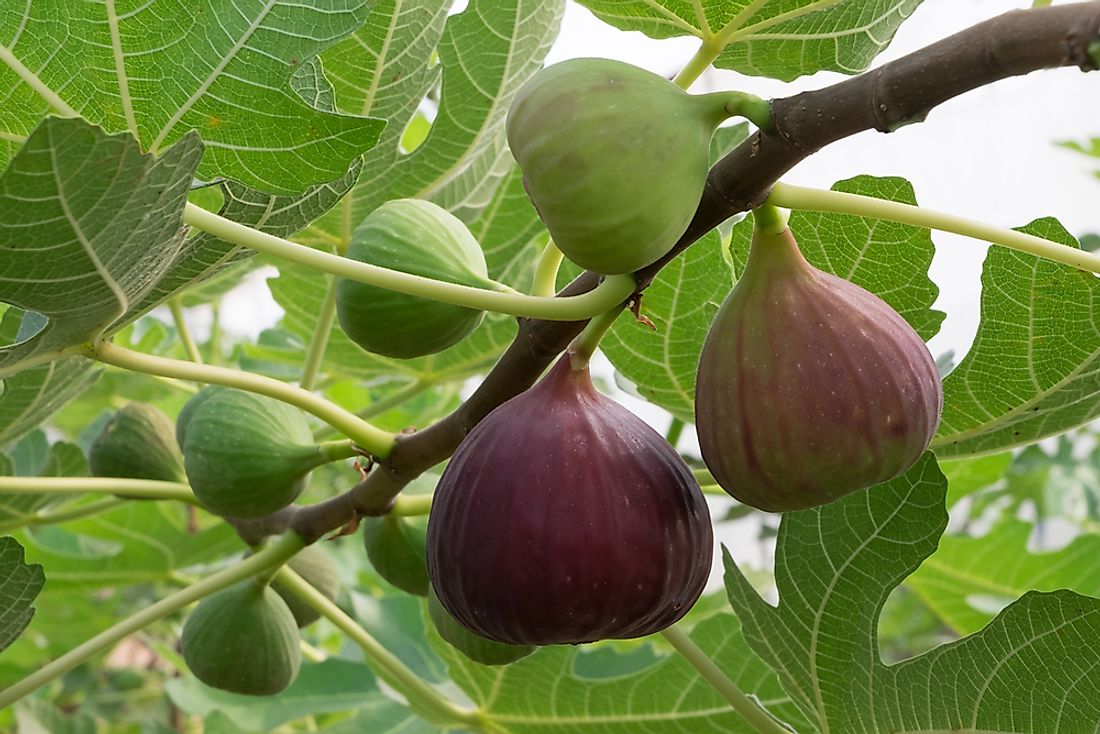Where are Figs Grown?

The fig has been cultivated as an edible commodity for thousands of years throughout the Middle Eastern and Mediterranean regions. One of the first domesticated fruit crops in human history, archeological evidence suggests that figs were originally cultivated in southern Arabia and became established throughout the Mediterranean more than 6,000 years ago. Fresh and dried figs have become a staple of Middle Eastern and Mediterranean cuisine. Dried fruits have a shelf life of over a year, and can be shipped and stored easily. There are a number of different edible fig varieties, most with an intensely bright fruit flavor, some with hints of berries or citrus in fresh form. Some varieties are self-pollinating, while others require cross-varietal pollination via insects such as the fig wasp.
Health Benefits
Figs are a nutritious, calorie-dense fruit and contain high levels of potassium, calcium, vitamins E, and vitamin B, as well as dietary fiber. Eaten fresh or dried, they are an ideal food source for increasing energy, strengthening immunity and aiding the digestive system.
Production
Turkey is the world leader in fig production and consumption. With an annual production of 262,644 metric tons, the country is responsible for more than 20% of global fig output and more than half of the world's dried fig output. Spain and Greece are two other notable Mediterranean producers, with 42,856 and 50,368 metric tons produced between them.
Egypt is the largest fig producing country in the Middle East, with 203,238 metric tons produced annually. Iran has an output of 75,834 metric tons, and Syria produces 44,032 metric tons each year. North Africa is also a major player in the fig industry, with Algeria, Tunisia, and Morocco producing a combined total of roughly 175,309 metric tons annually.
The United States ranks eighth in global fig production, producing 43,001 metric tons per year. However, it is interesting to note that nearly all of US figs are grown in California, where the fruit was introduced less than 250 years ago.
Fig Cultivation In The New World
Edible figs were introduced to California by Spanish missionaries in the 1760s and were cultivated in missions up and down the California coast. During the Gold Rush of the 1850s, many other fig varieties were introduced by emigrants from Europe, Asia, and African countries. It soon became apparent that central California had an ideal climate for fig cultivation. Now there are more than 7,000 acres dedicated to fig growing in the state, particularly along the 38 degree latitude line, which extends through both central California and the Mediterranean basin.
Continuing Research
In Morocco, farmers have been breeding wild and domestic fig species for thousands of years, contributing to a thriving biodiversity and development of new varieties. The village of Jillin, Syria is home to a gene bank, set up by the Arab Center for the Studies of Arid Zones and Dry Lands (ASCAD). The University of California has heavily invested in fig breeding and development for the past one hundred years in collaboration with private fig growers in the area.
Top Fig Growing Countries
| Rank | Country | Annual Production of Fresh Figs in Metric Tons |
|---|---|---|
| 1 | Turkey | 262,644 |
| 2 | Egypt | 203,238 |
| 3 | Morocco | 76,625 |
| 4 | Iran | 75,834 |
| 5 | Algeria | 72,898 |
| 6 | Greece | 50,368 |
| 7 | Syria | 44,032 |
| 8 | United States | 43,001 |
| 9 | Spain | 42,856 |
| 10 | Tunisia | 25,786 |











